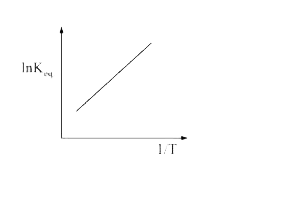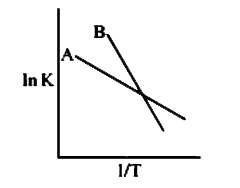The graph relates. In Keq.vs.1T for a reaction. The reaction must be:

exothermic
endothermic
ΔH is negligible
high spontaneous at ordinary temperature
In K2K1=ΔHR[T2−T1T1T2]
Since K increase with decrease of temperature and thus ΔH=−ve.
Topper's Solved these Questions
- CHEMICAL EQUILIBRIUMBOOK - P BAHADURCHAPTER - CHEMICAL EQUILIBRIUMEXERCISE - Integer
12 Videos
- CHEMICAL EQUILIBRIUMBOOK - P BAHADURCHAPTER - CHEMICAL EQUILIBRIUMEXERCISE - Comprehension
22 Videos
- CHEMICAL BONDINGBOOK - P BAHADURCHAPTER - CHEMICAL BONDINGEXERCISE - Exercise 7
11 Videos
- GASEOUS STATEBOOK - P BAHADURCHAPTER - GASEOUS STATEEXERCISE - Exercise -9
1 Video
Similar Questions
Knowledge Check
A schematic plot of log Keq vs inverse of temperature for a reaction is shown in the figure. The reaction must be:
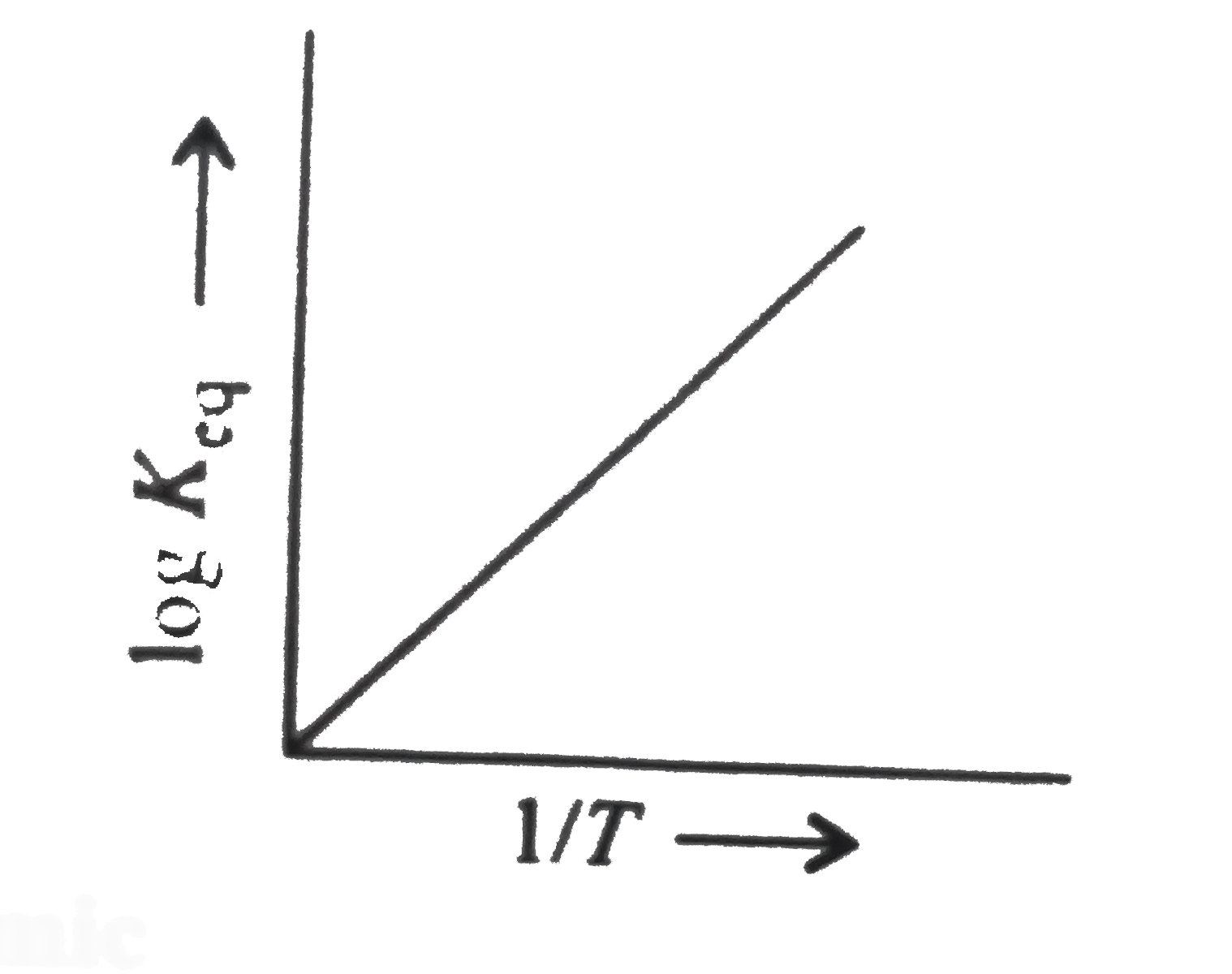 AExothermicBEndothermicCOne with negligible enthalpy changeDHighly spontaneous at ordinary temperature
AExothermicBEndothermicCOne with negligible enthalpy changeDHighly spontaneous at ordinary temperatureA schematic plot of ln Keq versus inverse of temperature for a reaction is shown below
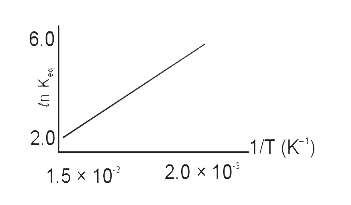
The reaction must beAendothermicBexothermicChighly spontaneous at ordinary temperatureDone with negligible enthalpy changeA schematic plot of In Keq versus inverse o ftemperature for a reaction is shown below
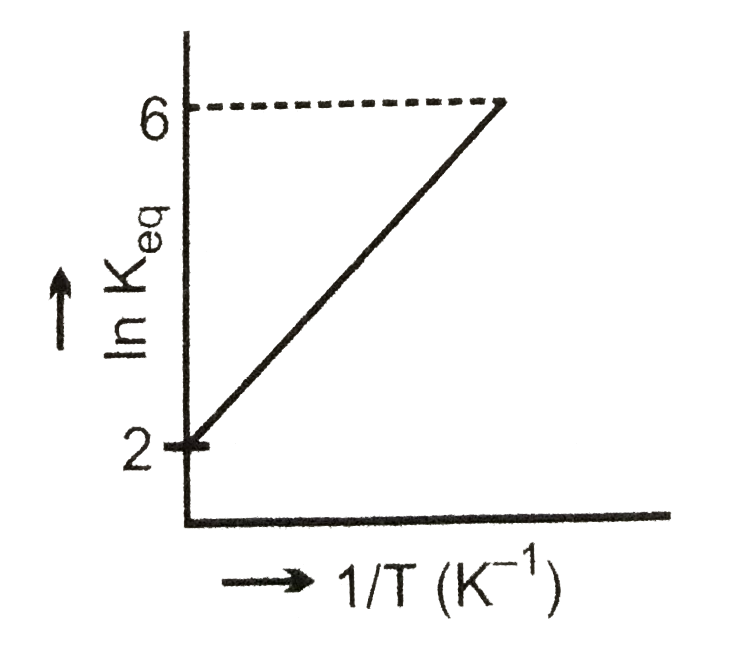
the reaction must be:AExothermicBEndothermicCOne with negligible enthalpy changeDHighly spontanceous at ordinary temperature
Draw the plot of In vs 1/T for a chemical reaction .What does the intercept represent ? What is the relation between slope and Ea ?
View SolutionThe slope of a line in the graph of log k versus 1T for a reaction is −5841K. Calculate energy of activation for the reaction.
View SolutionIf the graph of concentration of [A] vs T for completion of reaction is a straight line, then the order of reaction is
View SolutionThe magnitude of the equilibrium constant (Keq) for a cell reaction is related to the magnitude of the standard Gibbs energy change for cell reaction by.
View SolutionActivation energy (Ea) and rate constant (K1 and (K2) for a chemical reaction at two different temperatures T1 and T2 are related by:
View Solution
